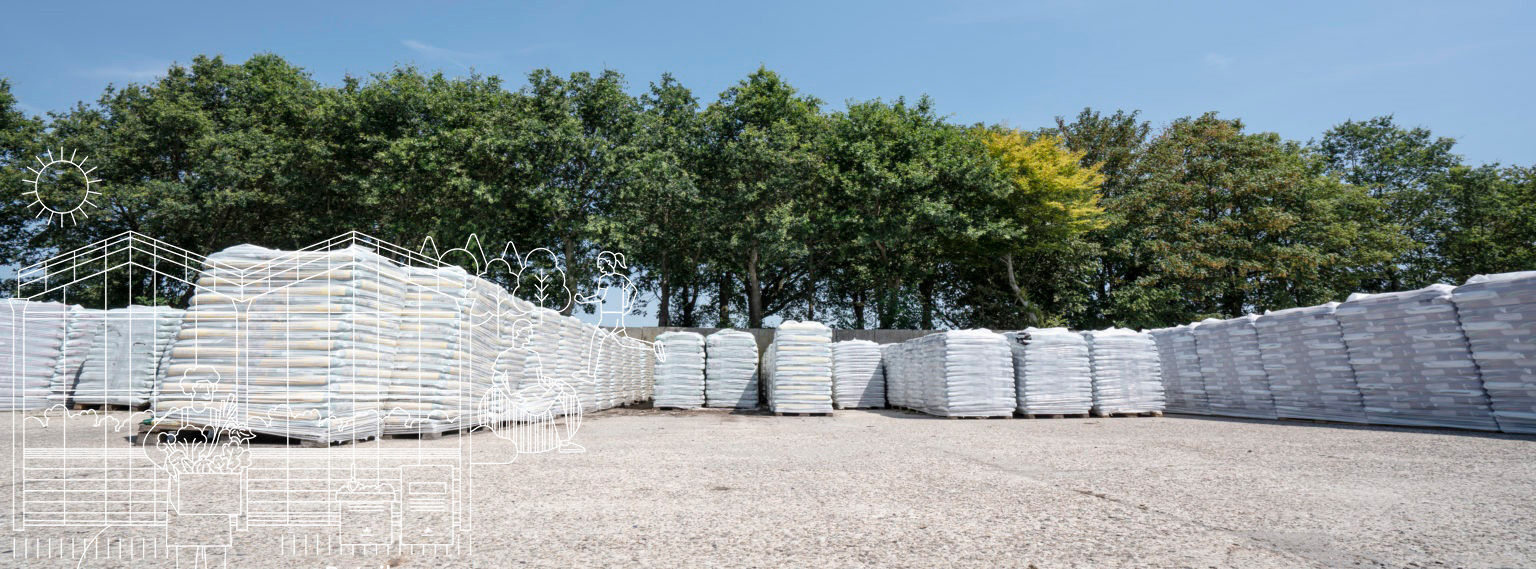What goals does Kekkilä-BVB set?
‘At Kekkilä-BVB, we focus on customer success by ensuring high quality products for our customers. A key factor in achieving this is by using sustainable packaging. Our packaging is made entirely out of plastic, a material chosen for its exceptional qualities and benefits such as stretchability, strength and durability which are needed during transport. However, we also recognise that plastic pollution is a major problem for our environment and we have the responsibility to take action. Therefore, by 2024, Kekkilä-BVB will replace 80% of virgin (oil based) plastic in our packaging with recycled plastic or alternative packaging methods and 100% of our packaging is recyclable.’ Read about all of our sustainability goals on the corporate website of Kekkilä-BVB.
What packaging is now being used?
‘Our packaging is made up out of two parts, the first are the bags or bales containing our substrate. Depending on the customer, our substrates are transported in bags of several sizes ranging from 45 litre bags to big bales of up to 300 litres. These bags usually consist of three layers: the outer layer that contains the printing, a middle layer and the inner black layer which blocks light in order to protect the substrate from the formation of algae and other undesirable organisms. The bags and bales containing our substrates make up the largest part of our packaging, the remaining and second part of our packaging are the stretch films that are wrapped around or over the pallet to protect it from the elements and during transport, as shown below.’
What is the total amount of plastic packaging?
‘Annually, we use up to 3,300 tons of plastic in our packaging at Kekkilä-BVB. Roughly 72% of that is used in the business unit retail and landscaping, 25% in the business unit professional growing and the remaining 3% is used in the raw material business unit.’
Which alternative more sustainable packaging materials did Kekkilä-BVB investigate?
‘We conducted various tests with alternative materials such as biobased, biodegradable and recycled material in our packaging. The primary purpose of these tests was to investigate the quality level in terms of sealability. Next to that it we also investigated the impact of the elements and visual appearance. The secondary purpose was to see how our operations would react to different materials. We also compared the environmental impact of the alternatives.’
What is the difference between biobased and biodegradable?
‘Biobased refers to the raw material. These are renewable, natural resources, such as corn or potatoes. However, the material is not always degradable. Biodegradable packaging is. Fungi and bacteria can naturally break down this packaging. They convert it into water, CO2 and methane. Moreover, degradability says nothing about the speed with which this happens and under what circumstances. Biobased material can be more sustainable than virgin oil-based plastic if you know the origin of the material.
The increase in sustainability is mostly achieved through a reduction of greenhouse gas emissions and a lower usage of non-renewable energy sources compared to oil-based plastic. However, the change in land usage needed to grow the materials required to produce biobased plastic can influence the positive impact on the sustainability of the packaging negatively. Due to large differences in both positive and negative impacts on the environment, we have decided to exclude biobased packaging material.’
Biodegradable plastics
‘Biodegradable plastics are generally not seen as a solution for the problem of litter and “plastic soup”. That’s because they have a large CO2-footprint. As such, Kekkilä-BVB has decided to use biodegradable material only in exceptional situations. An example of this is when countries do not have fully developed recycling systems in place. This means they are unable to successfully recycle and reuse the recycled material in new applications. In such countries, packaging waste often finds its way to natural areas where it pollutes the environment. In these cases, biodegradable plastic will at least result in a lower risk of harmful consequences than if they are not degraded.’
Our goals with other packaging
‘Packaging can only be called sustainable when we have achieved a closed loop system, In such system packaging material sent into the market is collected, recycled and reused in either packaging material or other applications. At the moment, there is no chain of packaging material that is closed. We believe that closing the chain is the path to sustainable everyday living.’
How will we contribute to closing that loop?
‘We are going to help form a market for recycled plastic by using recycled material in our packaging. In addition we will ensure that all of the packaging we use is recyclable. Through our target, we want to ensure that the resources needed are used in the most optimal way and as often as possible. This is already common practice with “hard” plastic such as pots and trays but not with flexible plastic like that used in bags.’
What adjustments will be carried out to reach more sustainable packaging?
‘As we explained before, bags used to pack substrates consist of three layers. It is possible to use recycled material in the inner two layers while the outer layer remains 100% oil-based plastic. This ensures that the packaging retains its high quality appearance while being more sustainable. Currently, no recycled material is used in stretch foils as it reduces their stretchability and strength.’
What do we expect from our partners?
‘We want to work together in the chain. One of the core values at Kekkilä-BVB is achieving together. This is exactly what is needed in order to create a closed packaging chain. In the future, we will cooperate with global and local partners to tackle plastic recycling challenges worldwide. The challenges are often region or even country specific. In 2030, Kekkilä-BVB will be a net positive company but we cannot achieve this by ourselves. We can only have an impact through cooperation.’
